
Mobile phones have become a common device for us, and everyone’s requirements for mobile phones are getting higher. In addition to increasing demands for phone performance, the requirements for mobile phone screens are also rising. Currently, the most widely used mobile phone screens on the market are only two types: OLED screens and LCD screens.
What are the differences between OLED screens and LCD screens? Which one is better? Let’s expand our knowledge together!
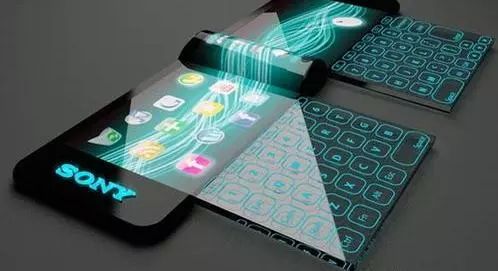
The light-emitting principle of LCD relies mainly on the backlight layer, which is typically composed of numerous LED backlight lamps. Its only function is to display white light, but white light cannot form an image. Therefore, a layer of colored film is added on top of this white backlight layer. When the white backlight penetrates the colored film, it can display colors. However, it also needs to adjust the ratios of red, green, and blue. The light cannot directly pass through red, green, and blue; instead, it is controlled through the liquid crystal layer by changing the voltage of the two poles to rearrange the liquid crystal molecules. This way, the amount of light emitted can be controlled by adjusting the opening and closing sizes, thereby adjusting the ratio of red, green, and blue.
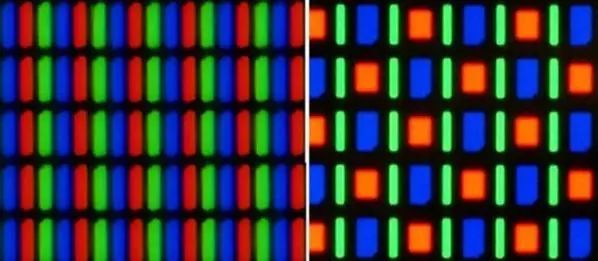
On the other hand, OLED does not require the backlight layer like LCD screens, nor does it need a liquid crystal layer to control light output. OLED can emit light by itself, so it is like a screen composed of countless small colored light bulbs.
Advantages of OLED
1. Thickness
LCD screens are composed of backlight layers and liquid crystals, making them much thicker than OLED. OLED screens can be less than 1 millimeter thick and are also lighter. In this regard, OLED is more portable than LCD, providing a better feel in hand.
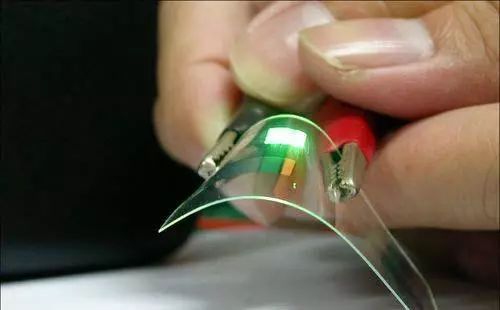
2. Flexibility
Due to the presence of the liquid crystal layer and backlight layer, LCD screens cannot be significantly bent, whereas OLED screens are solid-state structures without liquid materials, allowing them to be manufactured on various substrate materials, making them capable of being flexible displays. OLED can be folded like origami; Samsung’s curved screens are supported by OLED technology. It’s important to note that this refers to significant bending; desktop curved screens are still LCD, and you can see that the curvature is minimal. OLED can be folded like paper, giving it a broader range of applications compared to LCD screens.

3. Contrast
Contrast refers to the ratio of white to black; the higher the contrast, the more vibrant the colors. Due to the backlight layer, black on LCD is not pure black, making it difficult to achieve high contrast. OLED does not emit light in black areas, allowing it to turn off pixel points in black regions, which gets it closer to pure black.
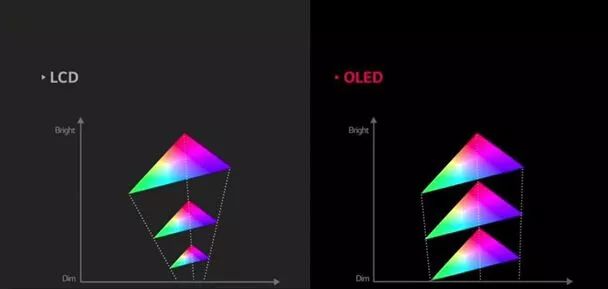
4. Power Consumption
OLED pixels work independently; some are bright, some are dark, and some are off. LCD displays are always fully backlit regardless of the color displayed, so while displaying black content, it is indeed more power-efficient, but for bright backgrounds, LCD is relatively more power-efficient. This is what many manufacturers advertise as screen-off display.
Disadvantages of OLED
1. Burn-in
The defects of OLED are also obvious and fatal. LCD screens are made of inorganic materials, which have a much slower aging speed compared to organic materials like OLED. Therefore, the lifespan of OLED’s organic materials is not as long as that of LCDs. Moreover, a more critical issue is that since each pixel in OLED emits light independently rather than the entire area lighting up like LCD, this leads to uneven aging of pixels. For instance, if a blue pixel is lit for a longer time, its blue will fade more compared to other pixels, causing the blue to appear fainter when displayed again. The same applies to red and green, making OLED prone to a phenomenon known as burn-in (uneven aging causing residual images).

2. Flicker
Screens need to control brightness. For LCDs, we can directly adjust the voltage of the backlight layer to control brightness (DC dimming). However, OLED shows an uneven jelly effect at low voltages, so it cannot use voltage control for brightness adjustment. Instead, OLED controls brightness by rapidly switching on and off. When the switching frequency reaches a certain level, the human eye cannot perceive it (PWM dimming).
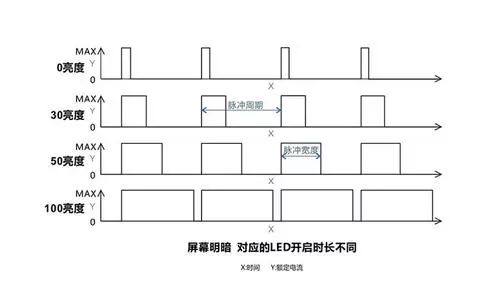
The principle of DC dimming is very simple; it changes the screen brightness by increasing or decreasing the circuit power. Power = Voltage x Current, so changing either voltage or current can change screen brightness.
PWM dimming is another way to adjust brightness. On a PWM dimming screen, brightness is not adjusted by changing power but by alternating the screen between on and off states. When the on-off alternation is fast enough, the human eye perceives the screen as continuously lit.
The lower the speed of the on-off alternation, the greater the potential adverse effects on the eyes. However, this is not absolute, as sensitivity to flicker varies among individuals. For instance, some may feel fine while viewing the same PWM screen, while others may experience fatigue. If you belong to the highly sensitive group, you might need to use phones with high-frequency PWM dimming or even DC dimming.

Currently, many manufacturers promote “pseudo DC dimming”, which, when applied to OLED screens, is fundamentally not DC dimming but achieves brightness adjustment based on the highest flicker frequency of the screen. In this way, it performs much better than PWM dimming, but it still has flickering.
To protect your eyes, regardless of whether it’s LCD or OLED, it’s best not to use your phone before bed. After all, as long as it’s a screen, it can harm your eyes.
It’s important to note that many low-end LCD screens also use PWM dimming; don’t assume that all LCDs are DC dimming.

Source: Fujian Science Popularization, summarized from Baidu Encyclopedia and 360 Encyclopedia
